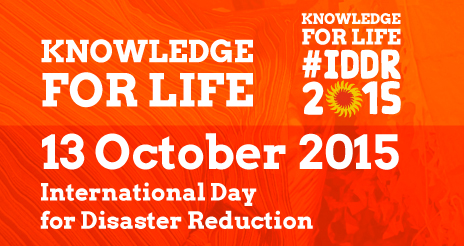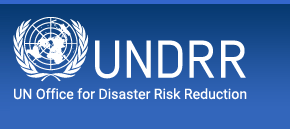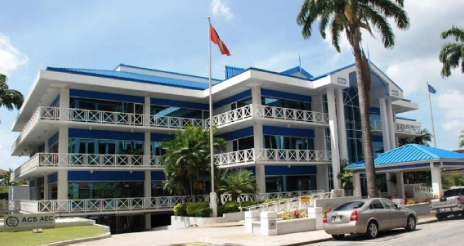- Our Mandate
- Mission and Objectives
- UNDRR in the UN
- Work Programme & Annual Reports
- Results Based System
- Work Partnerships
- Headquarters - Geneva
- SG-UN representatives for DRR
- Regional Office – The Americas and the Caribbean
- Head of the Regional Office – The Americas and the Caribbean
- What is Disaster Risk Reduction?
- What is the International Strategy?
- History of UNDRR
The Challenge of Small Island Developing States: Barbados, Mauritius, Samoa and beyond
ACS in the Greater Caribbean
Source: ACS-AEC.
PORT OF SPAIN, Republic of Trinidad and Tobago, 13 August, 2015 - The United Nations Office of the High Representative for the Least Developed Countries, Landlocked Developing Countries and Small Island Developing States defines small island developing states, or SIDS, as “a distinct group of developing countries facing specific social, economic and environmental vulnerabilities”. These countries are across the globe in the Caribbean, the Pacific, Atlantic and Indian Oceans, and the Mediterranean and South China Sea.
In addition to common difficulties faced by developing countries, SIDS have an additional series of challenges to cope with that require special assistance from the international community. These challenges were highlighted in the 1994 Barbados Programme of Action (BPOA) and the Mauritius Strategy of Implementation (MSI) of 2005, both of which stated that the difficulties SIDS face in the pursuit of sustainable development are particularly severe and complex.
Recognition of these issues was reinforced in September of 2014 when Member States of the United Nations officially adopted the Small Island Developing States Accelerated Modalities of Action, known as the SAMOA Pathway.
The challenges that SIDSs face are varied, but all conspire to constrain their development processes. They typically do not have a wide base of resources available to them, and thus do not benefit from cost advantages that this could potentially generate. Coupled with small domestic markets, they experience difficulties in profiting from globalisation and trade liberalisation and are cripplingly reliant on external and remote markets with limited opportunities for the private sectors.
The cost of provision of energy, infrastructure, transport and communication are high, and along with high population densities, creates increased pressure on these already limited markets. These developing countries generally have a heavy reliance on tourism and services; however, as a consequence of their low resilience and location, they are also heavily affected by disasters due to frequent natural hazards.
The unique characteristics and vulnerabilities facing SIDS were first addressed by the international community at the Earth Summit (United Nations (UN) Conference on Environment and Development) in Brazil in 1992. The SIDS case was the focus of Agenda 21, a non-binding, voluntarily implemented plan of action of the Summit, committed to addressing the problems of sustainable development of SIDS.
This plan involved adopting methods to enable SIDS to function and cope effectively with environmental change, and to mitigate the impacts and reduce the threats posed to their marine and coastal resources. Following Agenda 21, the Barbados Programme of Action was introduced in 1994, in an effort to provide further aid and support to SIDS. Similarly, its ultimate aim was to improve sustainable development. It highlighted the challenges of converting Agenda 21 into precise strategies, movements and procedures at the national, regional and international level and listed fifteen areas of priority for specific action.
Five further areas were selected by the UN General Assembly in 1999, recognising their urgency. These five were: climate change, as the rising sea level could render some low-lying SIDS submerged; natural and environmental disasters and climate variability, with an emphasis of improving disaster preparedness and recovery; freshwater resources, preventing water shortages as demand increases; coastal and marine resources, promoting the protection of coastal ecosystems and coral reefs; energy, developing solar and renewable energy in order to lessen dependence on imported oil; and finally tourism, focusing on the management of the growth of the tourism industry and the protection of the environment and cultural integrity.
The 2005 Mauritius Strategy of Implementation further complemented the BPOA. It gave recognition to the challenges that are unique to SIDS, and proposed further action towards their sustainable development. The MSI emphasised the location of SIDS in the most vulnerable regions of the world with respect to natural and environmental disasters and their rapidly increasing impact. It made call for a global early warning system covering threats such as tsunamis, storm surges and cyclones, and stressed that some major adverse effects of climate change are already being observed.
Further, the MSI recognised the importance of international trade for building resilience and sustainable development in SIDS, and established the necessity for international institutions, including financial ones, to pay more specific attention to the structural drawbacks of SIDS. The MSI went further on matters of trade, stating that “most small island developing states, as a result of their smallness, persistent structural disadvantages and vulnerabilities, face specific difficulties in integrating into the global economy”.
More recently, in September 2014, the Small Island Developing States Accelerated Modalities of Action, also known as the SAMOA Pathway, was adopted. As in the case of the previous adoptions, the strategy recognises the need to support and invest in SIDS so that they can achieve sustainable development. Distinguishing the Samoa Pathway slightly from the BPOA and the MSI is the idea of investing in the education and training of the people of SIDS. The aim of this idea was to create “resilient societies and economies, with full and productive employment, social protection and decent work for all”, and to provide “full and equal access to quality education at all levels”, the latter which is a vital ingredient for achieving sustainable development.
The promotion of education for sustainable development is especially crucial for SIDS that are under direct threat from climate change, as it will “empower communities to make informed decisions for sustainable living rooted in both science and traditional knowledge”. Finally, the SAMOA Pathway supports efforts “to promote and preserve cultural diversity and intercultural dialogue, which provide a mechanism for social cohesion and, thus, are essential in building blocks for addressing the challenges of social development”.
Many SIDS have recognised the need to embrace sustainability through their own internal processes, however, without external aid from the international community, the required change will not come quickly enough. Following on the adoption of the Samoa Pathway, 2015 is rapidly becoming a watershed year for global processes of importance to SIDS. Convergence is occurring across a broad spectrum of activities as this year has seen the international community deliberate on the Post 2015 framework for disaster risk reduction which culminated in the adoption of the Sendai Framework, new expected agreements in the post 2015 development agenda with Sustainable Development Goals replacing the Millennium Development Goals.
New agreements are also expected on how development is financed and there remains expectation of a new international agreement on climate change. Given their far reaching impact, these developments are critical, particularly when viewed from the perspective of the small island developing state. Notwithstanding the global consensus, serious challenges remain for SIDS and for the foreseeable future; they will remain a special case for sustainable development. However, with a global consensus and an avid commitment to the advancement of sustainable development in these countries, positive change is most certainly on the horizon.
George Nicholson is the Director of Transport and Disaster Risk Reduction and Anastasia Ramjag is the Research Assistant of the Directorate of Transport and Disaster Risk Reduction of the Association of Caribbean States. Any comments or feedback should be submitted to feedback@acs-aec.org
Follow the UNDRR news online:
 International Day for Disaster Reduction #DIRD 2015 Knowledge for Life
International Day for Disaster Reduction #DIRD 2015 Knowledge for Life
More information

